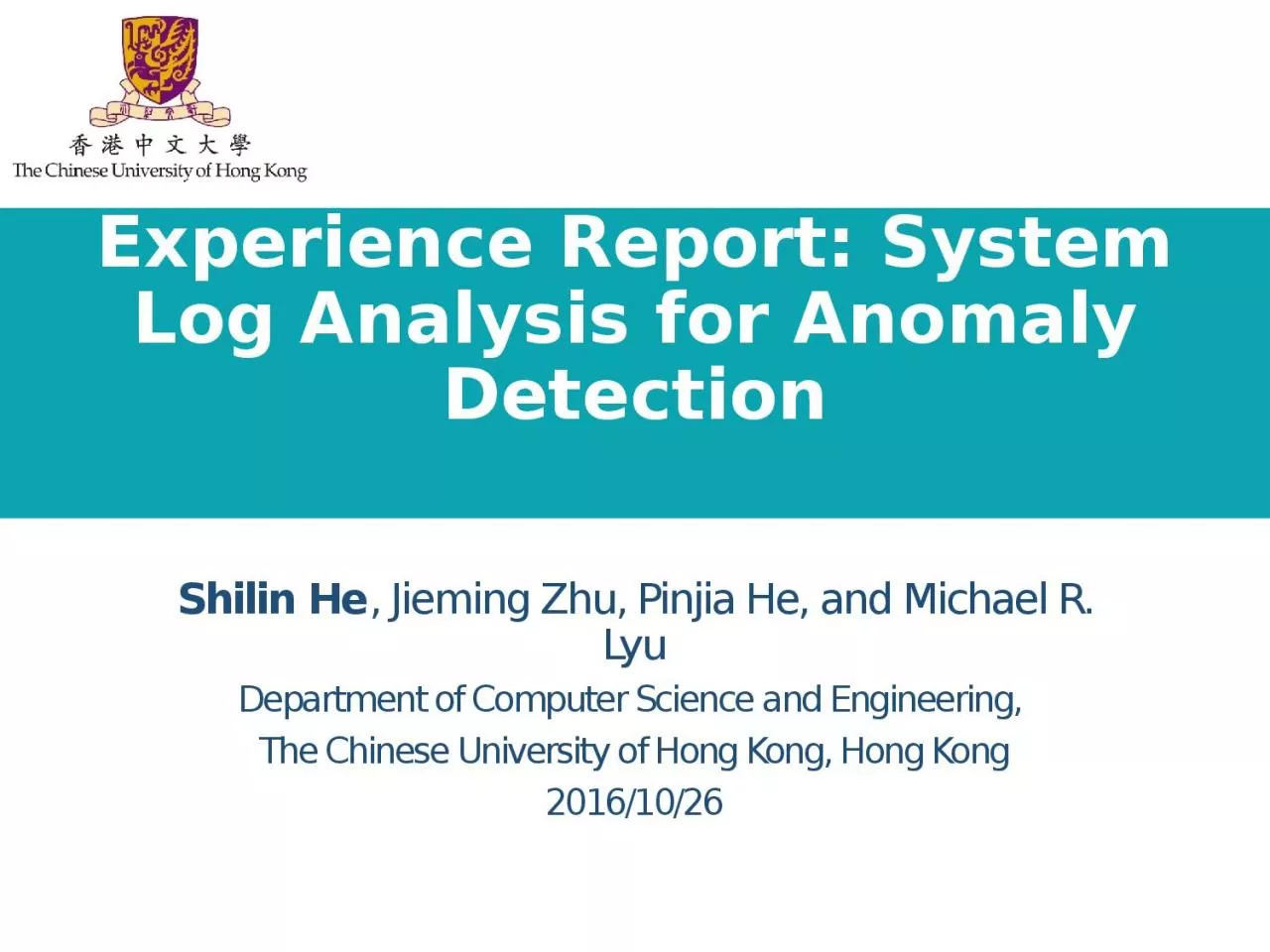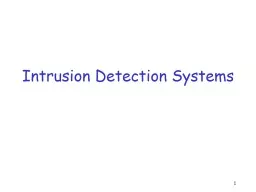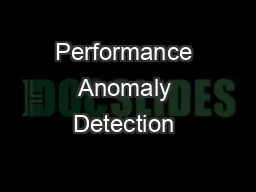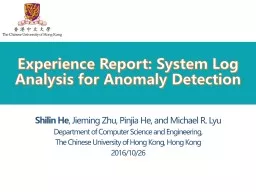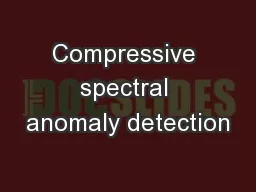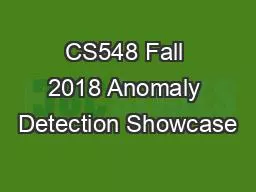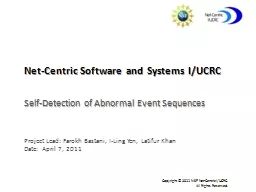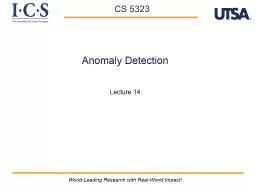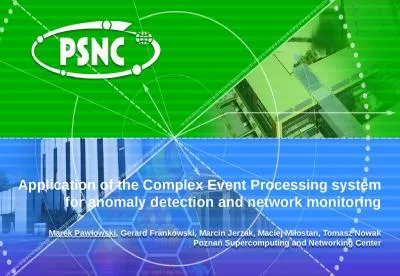PPT-Experience Report: System Log Analysis for Anomaly Detection
Author : madison | Published Date : 2022-06-07
Shilin He Jieming Zhu Pinjia He and Michael R Lyu Department of Computer Science and Engineering The Chinese University of Hong Kong Hong Kong 20161026 Background
Presentation Embed Code
Download Presentation
Download Presentation The PPT/PDF document "Experience Report: System Log Analysis ..." is the property of its rightful owner. Permission is granted to download and print the materials on this website for personal, non-commercial use only, and to display it on your personal computer provided you do not modify the materials and that you retain all copyright notices contained in the materials. By downloading content from our website, you accept the terms of this agreement.
Experience Report: System Log Analysis for Anomaly Detection: Transcript
Download Rules Of Document
"Experience Report: System Log Analysis for Anomaly Detection"The content belongs to its owner. You may download and print it for personal use, without modification, and keep all copyright notices. By downloading, you agree to these terms.
Related Documents

